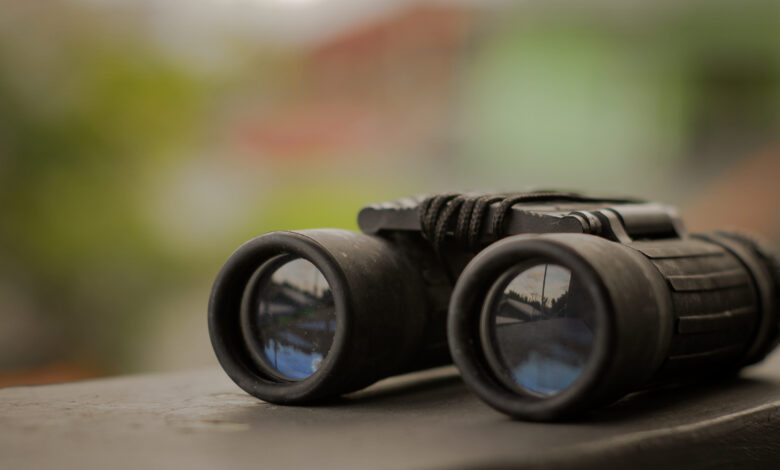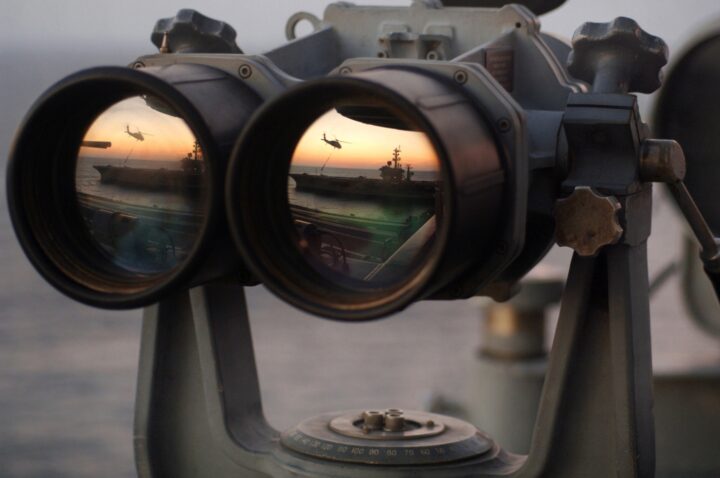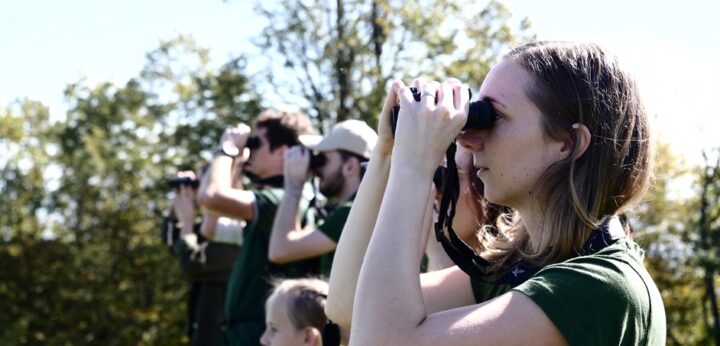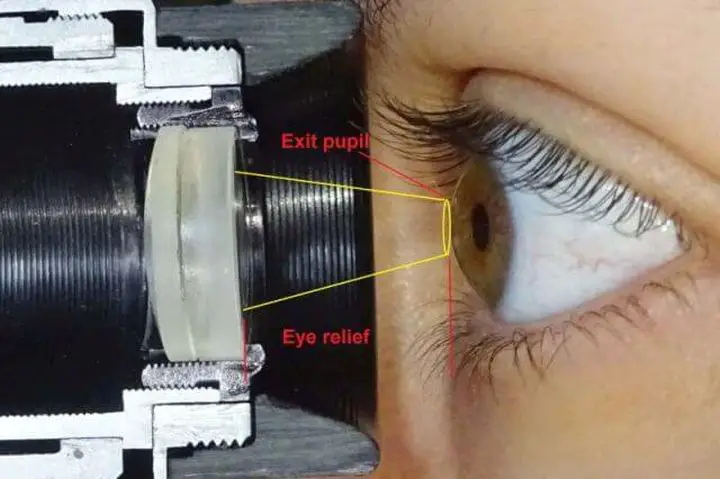How Do Binoculars Work

The binoculars have been around for centuries and are used for many purposes such as sporting events, surveillance, hunting, and bird viewing. Over the years, this handy gadget has undergone tremendous changes that enhanced its ability to zoom in and zoom out far away objects.
Today, the list of uses is endless as the manufacturers have worked smart to include features that make it compatible with the modern, fast-paced and tech-reliant way of life. Modern binoculars have the superior capability to give you a clear view of distant objects, making them ideal for surveillance and hunting.
To appreciate the immense capabilities of binoculars, let’s dive in and discuss the functions of their different parts. But before doing that, here is a list of the main components that work in tandem to enhance visibility.
- Diopter
- Focus
- Ocular lens
- Adjustable eyecup
- Objective lens
The primary role of the objective lens is to relay light from the object observed to create an image. The eyepiece lens increases the size of the image to enable you to see all the fine details.
To understand how a binocular works, it’s essential to discuss the different concepts that result in images’ creation.
Light Refraction

Light refraction refers to the process of bending light rays as they move through different materials. In this case, the light rays are refracted as they penetrate through the lenses when it hits the objective lens. This concept gives the binoculars complete control of the light.
Magnification and Lenses
Firstly, the binocular lenses are convex, meaning the middle section of the lens is thicker than the outer sides. The main reason for designing the lens this way is to refract the light towards the middle of the lens.
As a result, the lens can focus distance light rays into a small image projected to the human eye giving users an illusion that the object is just a short distance away.
The eyepiece lens work like a magnifying glass by increasing the size of the image to enable you to see all the details. For example, when using binoculars for hunting, the image of the target animal will be magnified to help you estimate the distance and take an accurate shot.
The Prisms

Earlier, we mentioned that the convex lenses refract the light rays emitted by the object being observed. However, the refraction often causes the light rays to cross over, resulting in an upside-down image. Unfortunately, the eyepiece lens can’t turn the image.
The prisms come in handy to rotate the image, thereby giving you a better view of the object. What are prisms? Prisms are large wedges of special glass with a superb capability to reflect light rays and rotate the image to the desired orientation.
Most of the binoculars in the market have two prisms in each tube. Each prism rotates the image from the convex lens 90 degrees.
In total, a binocular has four prisms, but when shopping, it’s recommendable to confirm the this to be sure that the model suits your needs. Over the last couple of months, our team has been busy reviewing and testing different night vision binoculars in the market. Use this guide to get a clear perspective of each model and make the right choice when shopping: https://theoptics.org/best-night-vision-binoculars/.
Binoculars Focus Barrel

Most of the binoculars in the market have a large center ring that you can rotate to adjust the focus on the target object. The advanced models have a diopter adjustment ring whose central role is to enable you to adjust the focus on each barrel independently.
This capability gives users the sharpest view of the target, especially when surveying at night. Check if the selected binoculars as a diopter adjustment ring before placing your order to get the best images.
Field of View
As the name suggests, the field of view refers to the area that the binocular can cover. It’s usually measured in feet, for example, 1,000 yards from your location. The higher the magnification capability of the lenses, the smaller the field of view.
If you zoom in with higher magnification, the total area you will be able to view is small compared to if you used a binocular will lower magnification. However, higher magnification means you will get a detailed and sharper view of the object.
A large field of view is ideal for pinpointing targets whose movements are difficult to track or objects that are hard to see from a distance, such as birds and wild animals.
On the other hand, the small field of view is ideal for surveillance projects as it offers a detailed view of the specific area. Bird watchers and hunters use it to get a closer look at the subject.
Eye Relief

As a new binocular user, it’s normal to get tempted to stick the eyepieces close to your eyes. Don’t worry; many people make the same mistake during the initial stages. It’s recommendable to maintain a small distance between your face and the eyepieces to get a clearer view of the area you’re surveying.
The distance is commonly referred to as eye relief. If it’s too small, you will not get enough space to see the whole image without your glasses or any other eyewear coming in contact with the eyepieces. If you wear glasses, shop for binoculars whose eye relief is not less than 11 millimeters.
Some binocular models come with adjustable eyepieces. With this binocular, you can adjust the eye relief to wherever is most comfortable with you.
Final Thoughts
Understanding how binoculars work before you start researching and comparing the different options available in the market will enable you to make the right decision. Check the reviews posted by customers to get a clear perspective of the quality and functionalism before placing your order.
Don’t also hesitate to contact the support team if any of the specs are not clear to avoid inconveniences down the road. For example, confirm whether it has a diopter adjustment ring and if the eyepieces are adjustable. The goal is to learn everything about the binoculars before buying to get value for money.

